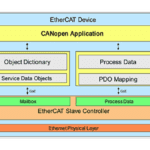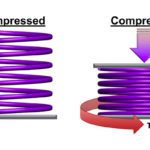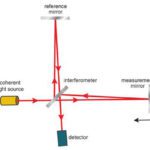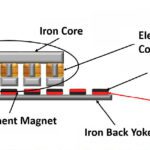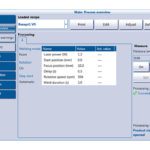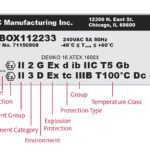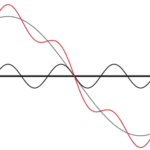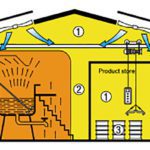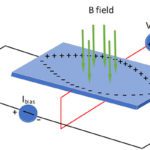The CANopen over EtherCAT (CoE) protocol allows devices equipped with CANopen to be used on EtherCAT-based Industrial Ethernet networks. CANopen: Simple and low-cost CANopen is a communication protocol based on the CAN (Controller Area Network) physical communication standard. In the OSI communication model, CAN specifies the physical and data link layers, while CANopen addresses the […]
FAQs + basics
How do wave springs eliminate problems associated with traditional coil springs?
Coil springs and wave springs are both types of compression springs, meaning the spring’s force increases as its axial length decreases (as the spring is compressed). But coil springs and wave springs react differently to applied loads, especially in terms of how stresses are created in the material, which in turn, affects their working load […]
Managing motion-design EMI for food metal detection
Electromagnetic interference (EMI) and radio-frequency interference (RFI) from ground loops and the operation of electric motor drives can degrade the performance of metal-detection equipment so essential to safe food processing. Here we look at ways to mitigate such issues. By Eric Garr • Regional Sales Manager | Fortress Technology Metal detectors in the food-processing industry […]
What are interferometric laser encoders and where are they used?
Optical encoders such as glass scales are often used for linear position measurements that require micron-level resolution. But applications in industries such as semiconductor and aerospace — especially those that involve optics — require measuring capabilities in the nanometer and even picometer ranges, beyond the resolution of most scale-based optical encoders. For these applications, direct, non-contact […]
How do manufacturers address cogging in linear motors?
Iron core linear motors are known for their high continuous and peak force capabilities, good thermal management, and excellent force-to-size ratio. But they’re also known to produce cogging forces, which lead to force ripple, or variation in output force. But how much of a problem is cogging for iron core linear motors, and what are […]
What are recipes in the context of HMIs?
Many companies offer a range of products that are variations of a “base” model, using many of the same components, manufacturing methods, and processing steps to keep inventory and manufacturing costs under control while still providing customers with a range of choices to fit their exact needs. Automobiles are an excellent example. Take the Ford […]
ATEX and IECEx classifications and markings explained
When electrical equipment is used in a potentially hazardous location — one that contains flammable gases, vapors, liquids, dust, or fibers — it’s important that the potential for fire or explosion be minimized. One way to do this is to use equipment that has been certified as suitable for that environment and not likely to […]
What are harmonics and how do they affect motion control systems?
Harmonics are voltages or currents caused by non-linear loads on a power supply. Harmonic frequencies occur at integer multiples of a fundamental frequency and are superimposed on the fundamental voltage or current waveform, creating a distorted waveform. Harmonics are classified first by their order, or the integer multiple of the fundamental frequency. For example, for […]
Classifying hazardous locations: What’s the difference between Class, Division, and Zone?
According to the National Fire Protection Association, a hazardous location is an area where fire or explosion hazards may exist due to electrical equipment operating in the presence of flammable or ignitable gases, liquids, or vapors, or in the presence of combustible dust, fibers, or flyings. But even within this definition, the risk of fire or […]
How do Hall effect sensors work and where are they used in motion applications?
The Hall effect is an outcome of the Lorentz force at work. When a thin conductor (or semiconductor) has a steady flow of current running through it and a magnet is placed so that its magnetic field runs perpendicular to this current, the magnetic field of the current reacts to the magnetic field of the […]

